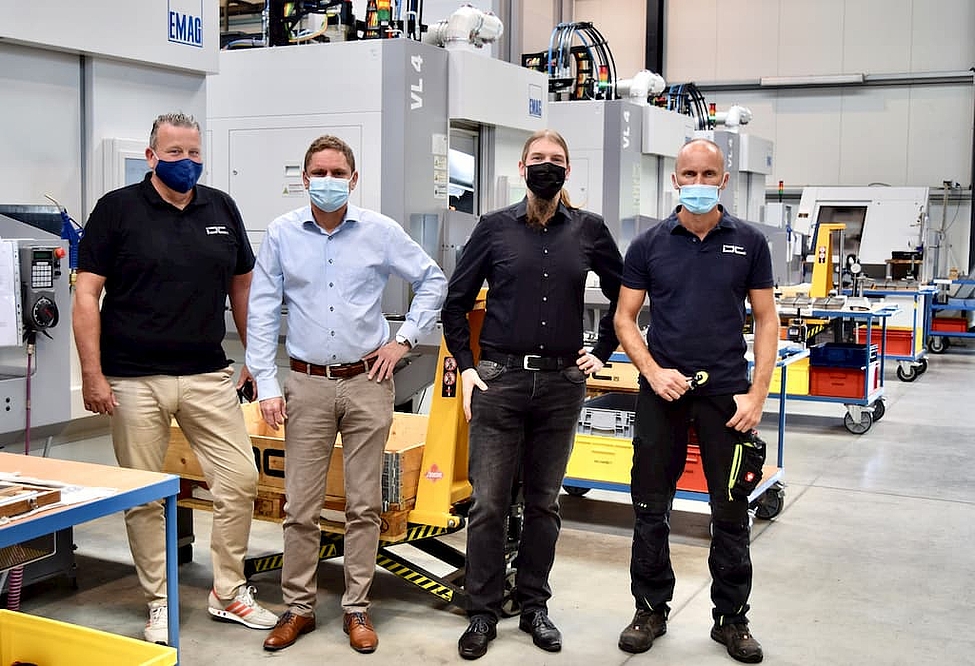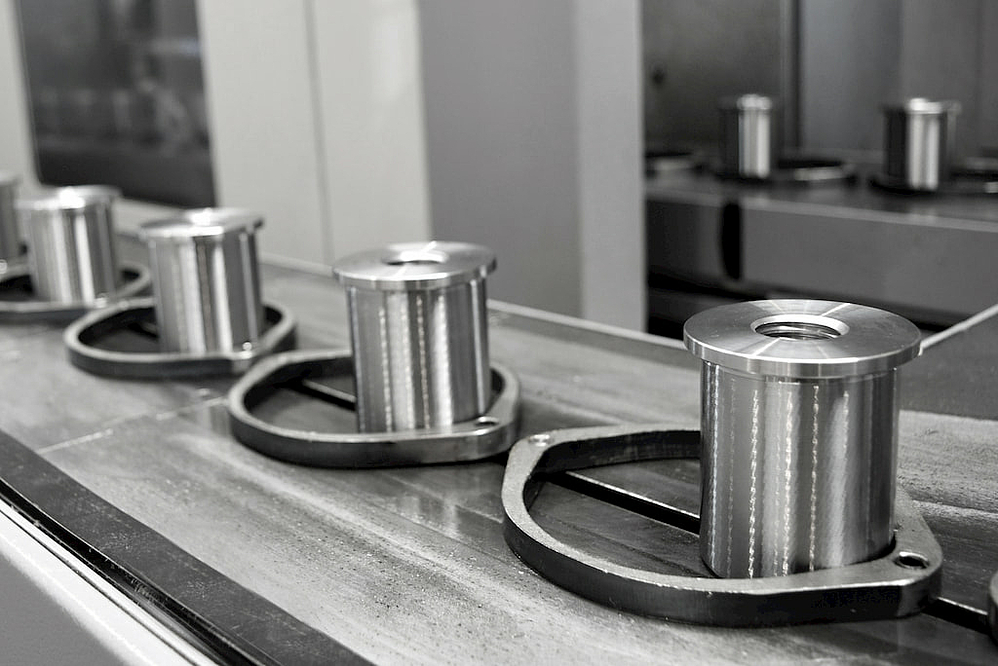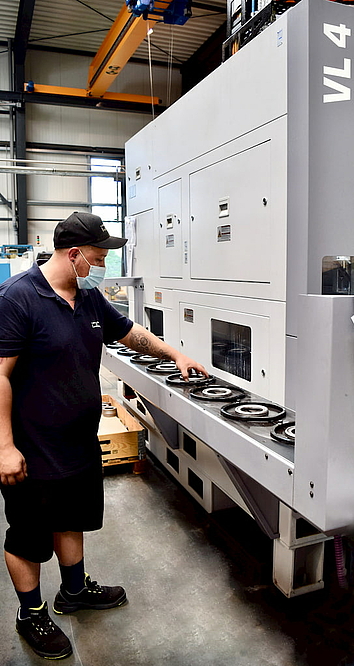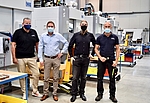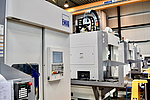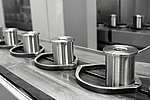12/09/2020 - Oliver Hagenlocher - Customer Stories
Interprecise Donath GmbH near Fürth, Germany: Why Precise Rolling Bearing Production Benefits from EMAG Machines
The running of many machines and production of a variety of gears would be impossible without roller bearings. Roller bearings have a ring-shaped design that facilitates rolling movements and reduces friction. Although this may sound simple, their production requires extreme precision in the micrometer range – a task perfect for Interprecise Donath GmbH, based near Fürth, Germany. For over 30 years, this company has been manufacturing particularly sophisticated rolling bearings, for example, those necessary for machine and gear construction. Planning, design and production is done completely in-house, and VL vertical turning machines from EMAG have been a staple since 2017. With their integrated pick-up automation, they ensure increased productivity, while guaranteeing the necessary component quality in the soft and hard machining of typical parts such as bearing rings. What has the rolling bearing specialists experience been like with this production solution?
Images
Although the typical question would be where rolling bearings are used…in this situation the better question is where are they not used? This is because rolling bearings are actually found in a very large number of machines, transmissions and vehicles. In most cases, they are mounted on shafts or axles and used for guidance or load transmission – including very low friction, which reduces the energy consumption of the drive. This background information already highlights their primary challenge: manufacturing tolerances of a few micrometers, which is performed by rolling bearing experts like Interprecise Donath GmbH. The Franconian company has approximately 140 employees and a turnover of almost 27 million euros, and is operating in a special “quality niche”. As Managing Director Christian Witte emphasizes: “We concentrate on special applications for customers that require only small batch sizes of between one and 2,000. Here, it’s understandable that people would consider this a high-precision market segment that does not allow unmanned series production. Instead, we rely to a certain extent on one-to-one operation: skilled workers have to monitor the process in the machines and continuously check the final quality of individual parts using measuring technology. Our fault tolerance is zero.
Efficient Handling of Increasing Order Volume
Interprecise is positioning itself as an extremely fast and flexible player in the market. Every inquiry about a new bearing is answered directly, as quickly as possible. Even the design implementation with technical drawings are released at top speeds. “We score points with our short reaction times and subsequent all-round customer support in this very demanding, technical area”, emphasizes Witte – an approach that has ultimately put the company on a steady growth path. In fact, the number of employees has almost tripled in the last 13 years. 2007 was a particularly significant year, as this was when the specialists first launched their own brand “iDC”, giving their rolling bearing quality a name. However, this positive product launch provided production planners at Interprecise with a big question: How can an increasing number of part variants and families be produced as cost-effectively as possible, without any loss of precision or process reliability? The answer ultimately led to the pick-up automation of the EMAG vertical machines. As Witte points out, “I first looked at this solution with customers of ours. It became clear that the approach of this machine, which is self-loading via the work spindle and can be operated semi-automatically, was ideally suited to our tasks. The whole thing allows us to increase productivity, even with smaller production runs, because one operator can easily supervise several machines. Ultimately, this means we can produce more, with the same numbers of employees”. In 2017, Interprecise invested in its first two VL 4 pick-up lathes, followed a year later by another VL 4 and a VL 6 (for slightly larger parts). The inner and outer rings of the bearings, for example, undergo soft and hard turning in the four EMAG machines – but in total up to 50 different parts are turned on the VL machines. The batch size varies between fifty and five hundred. This means that approximately three times a week, the machine specialist’s set-up the four pick-up lathes for new tasks.
Lower Unit Costs with EMAG Solutions
Interprecise is extremely happy with this solution, as Daniel Braun, responsible for work preparation and control, explains. "In the end, we were able to significantly reduce unit costs by around 15 percent because the machines run smoothly in unmanned operation. Our entire production process benefits significantly from the machine design". The process is very simple: The operator places the component on one of the drag rings in the circulating conveyor belt and removes it from there. The belt acts as an integrated part storage system and the machine can produce unattended the whole time, with a highly efficient process inside. The pick-up spindle removes the components from the drag rings and quickly feeds them to the workarea with integrated 12-part tool turret - short distances ensure equally short chip-to-chip times. Once the first part has been completed (and transported outside by belt), the operator will only need to make small machine adjustments. He then simply places the turned components back on the conveyor belt for processing the second side. The integrated measuring station plays a very important role between the workarea and the pick-up station, where a measuring process is performed on the component shortly before loading and unloading. Depending on the measurement result, the machine readjusts itself automatically, thus correcting tool wear and ensuring the indispensable repeat accuracy required for high-precision bearing ring production.
Focus on Flexibility
The overall design of the VL machine is important for both precision and economy. The machine body is made of MINERALIT ® polymer concrete, which reduces vibrations during the milling process and ensures long tool life and high surface quality. The machines main spindle is mounted at the front with a cross-slide alloying for dynamic movement in the X and Z-axes. Operators will also benefit from the easy accessibility of the workarea and the tool turret. This allows the vertical lathe to be retooled very quickly. “This was very important to us,” says Braun. “After all, we generally score points in the market because of our short response and delivery times, which ultimately depend on the flexibility of order-related production. That’s why the changeover of the machine must be done very quickly and easily, and this is absolutely the case for the EMAG solution”.
EMAG Machines as an Important Production Tool
Ultimately, the question remains as to where rolling bearing technology is currently heading and to what extent this will also challenge the production solution? In this context, Daniel Braun refers to generally increasing quality requirements - for example in mechanical engineering, where many bearings from Interprecise are used: "Take the example of 'printing presses'. It is quite obvious that the demands on the finished print quality are constantly increasing, which depends on the precise motion mechanics of the machines used. And rolling bearings play a decisive role here. So they have to be manufactured as precisely as they are wear-resistant - and this is precisely a development that we make possible with our development and production know-how. We see similar developments in many areas of application. EMAG machines form an important production basis for this. We see ourselves very well positioned here".
Downloads
Contact


